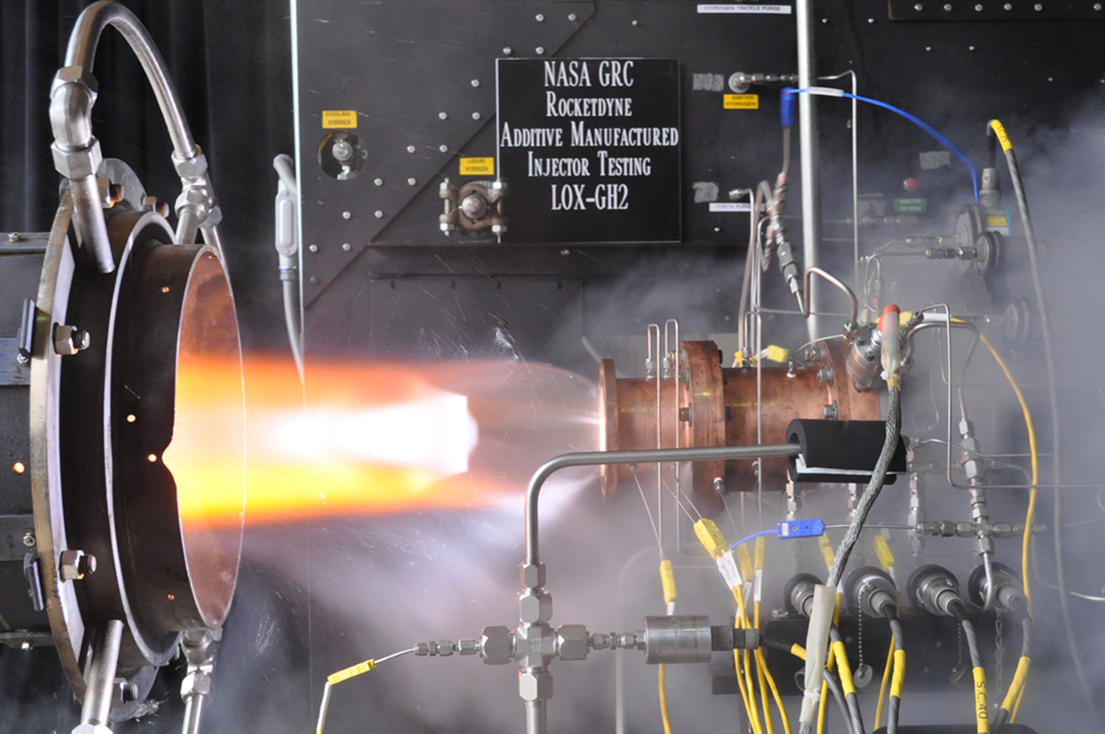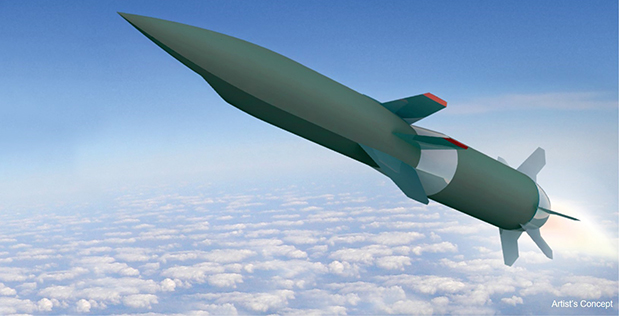We recently learned that the United States tested a hypersonic weapon in mid-March. At the time, Pentagon officials decided to keep it under wraps to avoid further tensions with Moscow amid an escalation in the Ukraine war and following a recent Russian attack on a weapons depot with a hypersonic missile. As a result, announcements were delayed until yesterday when we learned that the U.S.’ Hypersonic Air-breathing Weapon Concept (HAWC) had been successfully tested in a joint effort between the Defense Advanced Research Projects Agency (DARPA) and the U.S. Air Force.
Launched off a B52 bomber for 327 seconds, the hypersonic cruise missile produced by Lockheed Martin reached heights greater than 65,000 feet and was powered by an advanced Aerojet Rocketdyne (NYSE: AJRD) scramjet engine, which is built using advanced technologies like additive manufacturing (AM).
Focused on developing and demonstrating critical technologies to enable an effective and affordable air-launched hypersonic cruise missile system, the HAWC program builds on pioneering scramjet projects. A few examples include work on the Rockwell X-30 National Aero-Space Plane from the 1990s, as well as uncrewed flights of NASA’s small X-43 vehicles and the U.S. Air Force’s X-51 Waverider. This new and historic flight, which reached speeds above Mach 5, furthers the understanding of operations in the high-speed flight regime and opens the door to an industry that is developing super-high-speed armaments with new processes and techniques, including 3D printing.
Eileen P. Drake, Aerojet Rocketdyne CEO and President, said the pioneering company is well-positioned to support the nation’s hypersonic development and production.
“By applying decades of advanced research and development, together with engineering know-how and innovative manufacturing and materials, our products optimize performance while dramatically reducing costs and development time.”
A world-recognized aerospace and defense leader, Aerojet uses additive manufacturing in many of its undertakings. For example, the company explained that through 3D printing, it uses 95% fewer parts in its scramjets than it employed for the history-making scramjet engine that powered the United States Air Force X-51A Waverider to sustain hypersonic speed.
“Aerojet Rocketdyne has continued to improve the aerothermal performance, affordability, scalability and rapid manufacturability of scramjet engines to meet emerging needs for hypersonic missile and aircraft applications,” conveyed the company.
Along with innovative scramjets, Aerojet Rocketdyne manufactures a wide range of products to support hypersonics, including solid rocket motor boosters, warheads, and missile defense technologies. Like most of its major aerospace competitors, Aerojet has increasingly relied on AM to build parts for its rocket, hypersonic, and electric propulsive systems for space, defense, civil and commercial applications.
The AM team at Aerojet relies on G.E. Concept Laser and EOS machines for their selective laser melting requirements and superalloys, mostly nickel-based, for the engine parts being 3D printed. During the last decade, it has been actively working to develop AM platforms to build components that can reliably withstand the extreme operating environment of an engine, whether it is for space travel or Earthbound.
Following long-term technological collaborations with many government agencies and private customers, Aerojet has continued its impressive momentum in 3D printing. Above all, it seems to grasp the future potential of fabricating lightweight, complex geometries and high-value systems, especially as the U.S. defense unit expands further using AM technology for hypersonic propulsion.

A Test was conducted by NASA and Aerojet Rocketdyne on a 3D printed hydrogen rocket injector. Image courtesy of Aerojet Rocketdyne.
As the second successful flight in DARPA’s HAWC program, the hypersonic weapon concept missile demonstrator set a record for hypersonic flight under scramjet power. Last September, a different vehicle configuration from another contractor team led by Raytheon Technologies also reached hypersonic flight.
“This Lockheed Martin HAWC flight test successfully demonstrated a second design that will allow our warfighters to competitively select the right capabilities to dominate the battlefield,” said Andrew “Tippy” Knoedler, HAWC program manager in DARPA’s Tactical Technology Office. “These achievements increase the level of technical maturity for transitioning HAWC to a service program of record.”
Air-breathing vehicles utilize air captured from the atmosphere to achieve sustained propulsion, explains DARPA. The speed and maneuverability of such hypersonic cruise missiles allow both evasions of defenses and quick strikes, while their kinetic energy can effectively destroy targets even without high explosives.
“We are still analyzing flight test data but are confident that we will provide the U.S. Air Force and Navy with excellent options to diversify the technology available for their future missions,” said Knoedler.
Subscribe to Our Email Newsletter
Stay up-to-date on all the latest news from the 3D printing industry and receive information and offers from third party vendors.
You May Also Like
3D Printing Financials: Steakholder Foods Balances Losses and 3D Printed Tech Advances in 2023
A pioneer in the field of 3D printed meat and fish, Steakholder Foods (Nasdaq: STKH) disclosed its 2023 financial results, a year highlighted by technological progress but overshadowed by financial...
3D Printing Financials: Protolabs’ Q1 3D Printing Revenue is Flat, Company Advances in Technology Push
Protolabs (NYSE: PRLB) has kicked off 2024 with a mild boost in revenue, revealing how the Minnesota-based company manages to adapt and thrive even in uncertain market conditions. While the...
Supply Chain Management and the Role of 3D Printing Digital Inventories
As the additive manufacturing (AM) industry grows beyond its humble roots as a rapid prototyping technology, it has been adopted by some of the world’s leading companies to produce not...
3D Printing Financials: Materialise’s Profitability Amid Revenue Dip in Q1 2024
Materialise (Nasdaq: MTLS) has released its first-quarter earnings for 2024, highlighting a challenging quarter with some key advances despite a dip in revenue. While navigating a mixed performance across its...
































